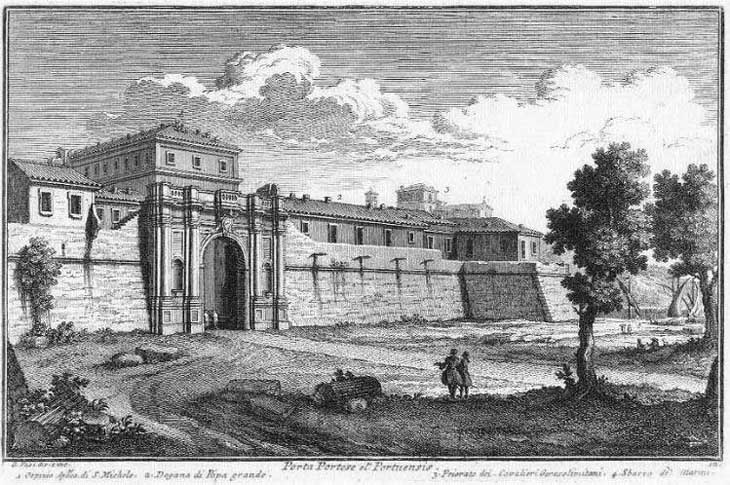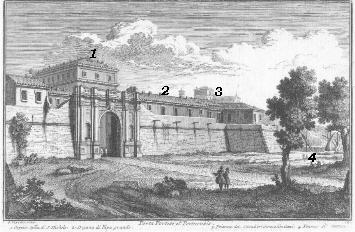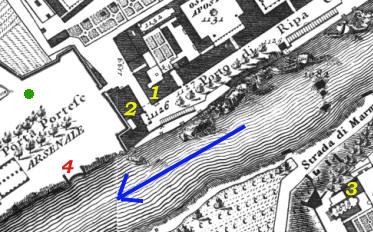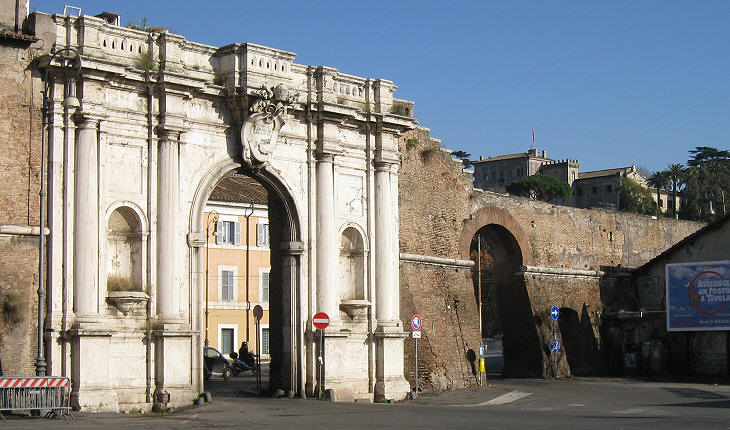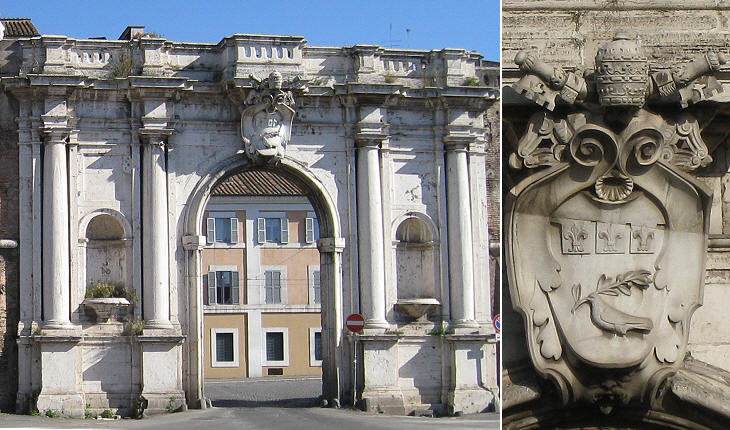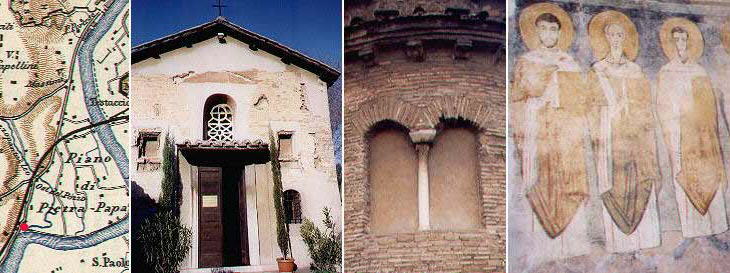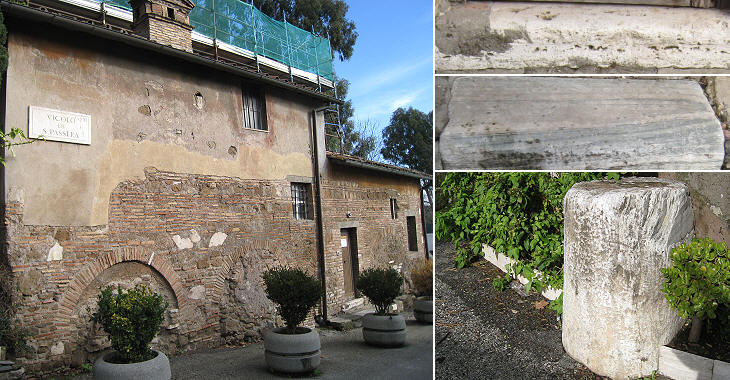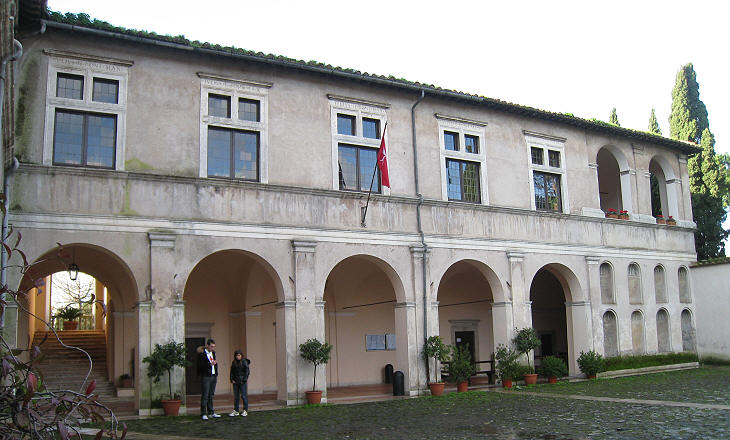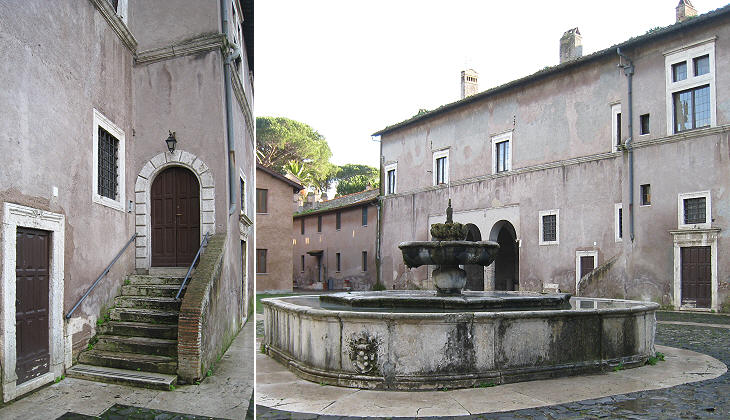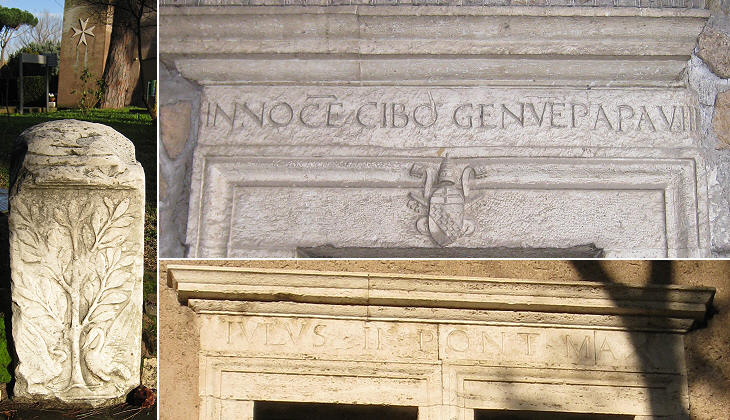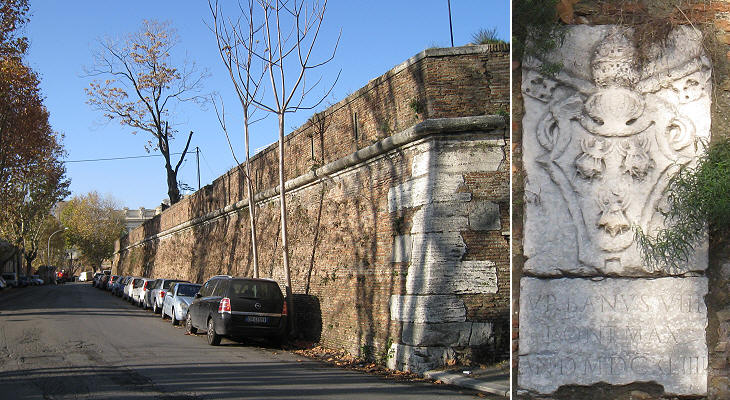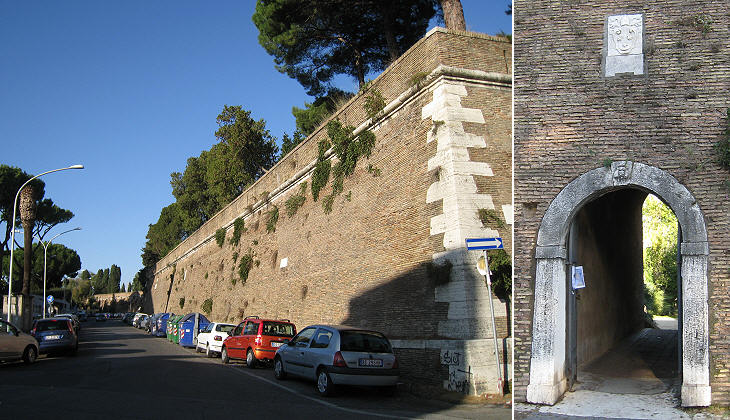  What's New! Detailed Sitemap All images © by Roberto Piperno, owner of the domain. Write to romapip@quipo.it. Text edited by Rosamie Moore. Page revised in January 2010. | Porta Portese (Book 1) (Day 6) (Map C3) (Rione Trastevere)
In this page:
The plate shows the gate built during the pontificate of Pope Urban VIII and which replaced the ancient Porta Portuensis which was located further south along the river; Portese is a corruption of Portuense (of the port). The gate was not yet completed when the pope passed away. Pope Innocent X, his successor, immediately ordered that his coat of arms should be placed on the gate, but he did not care to complete it: no statues were placed in the niches, nor a tower was built above the gate, as it had been done at Porta S. Pancrazio, the other gate of the XVIIth century walls surrounding Trastevere. The view is taken from the green dot in the small 1748 map here below. In the description below the plate Vasi made reference to: 1) Ospizio di S. Michele; 2) Dogana (customs) di Ripa Grande; 3) S. Maria del Priorato; 4) Area for unloading marbles. The small map shows also 5) Porta Portese. 1), 2) and 3) are shown in detail in other pages.
Today
Today Porta Portese is best known for its Sunday flea market. The custom house which stood behind the gate was pulled down at the end of the XVIIIth century and this facilitates the view over the Aventine hill. Cars coming from the city continue to pass through the gate, whereas a modern opening is reserved to those going the other way. Porta Portese
The gate was designed by Marcantonio De' Rossi, the military architect in charge of the construction of the new walls. He followed the pattern established by Antonio da Sangallo the Younger in Porta S. Spirito, another unfinished gate.
The small church of Santa Passera celebrates the relocation of the relics of Sts. John and Cyrus of Alexandria from Egypt to Rome. Aboukir, the Egyptian town near the famous bay where in August 1798 Sir Horatio Nelson defeated the French fleet, is a corruption of Aba Cyrus (St. Cyrus) and it was the site of a shrine to this saint; after the Arab invasion the shrine fell into abandonment and the relics of the saint were brought to Rome. In the XVIIth century the relics were moved to a Jesuit church in Naples.
The church is located at a large turn of the river, opposite S. Paolo
fuori le Mura and it served a small
community of miners excavating the tufa quarries of the nearby hills. The current building was erected in the IXth century making use of a Roman tomb.
The interior retains traces of medieval frescoes.
The reference to S. Passera is most likely a corruption of St. Cyrus; the devout refrain from using this name because it has a slang second meaning.
Hunting has always been a preferred pastime of the rich; Girolamo Riario, nephew of Pope Sixtus IV, enjoyed hunting along via Portuense, the road linking Rome to Porto, its ancient artificial harbour. Riario turned some existing buildings along the river into a small hunting lodge; Pope Innocent VIII, Pope Julius II and Pope Leo X enlarged and embellished the building. In particular Pope Leo X enjoyed spending occasional sunny winter days at this lodge (the location was very unhealthy in summer). Pope Pius IV also used to relax here before he built a casino in the Vatican. Because of its unprotected location the lodge was fortified and from the outside it has the appearance of a small castle.
While during the Renaissance no one objected to the fact that a pope spent his time hunting, in the following centuries this pastime was no longer regarded as appropriate for a pope and the lodge was abandoned. Today it is part of a hospital run by the Order of the Knights of Malta.
Papa (Pope) means father and it is the title of the Bishop of Rome and Head of the Roman Catholic Church. This title was used in medieval inscriptions where in some instances it was abbreviated as "P.P.". During the Renaissance and afterwards the popes preferred to use a title (Pontifex Maximus - P.M.) which was part of the system of government of Ancient Rome. The Pontifex Maximus was a magistrate in charge of presiding over the most important religious ceremonies; after Augustus it became a title given to the emperors who very often were portrayed in statues as Pontifex Maximus (see a statue of Augustus as Pontifex Maximus in Corinth).
In 1641 Pope Urban VIII made an attempt to impose papal authority on the Duchy of Castro, a possession of the Farnese who were also Dukes of Parma. The Farnese reacted to a papal decree imposing trade restrictions by strengthening the fortifications of Castro. In 1642 a papal army invaded and conquered Castro, but the Farnese retaliated by invading Romagna, the northern province of the Papal State, and by asking the Grand Duke of Tuscany and the Republic of Venice to form an alliance against the pope. This threat led Pope Urban VIII to decide to protect Rome by building new walls around Trastevere. The walls were completed in just two years, but in the meantime the pope had to sign a peace agreement and to return Castro to the Farnese.
In 1849 the section of the walls near Porta S. Pancrazio was greatly damaged by the French when they had to overcome the resistance of Garibaldi who was commanding the defence of the Roman Republic.
Next plate in Book 1: Candelabro degli Ebrei Next step in Day 6 itinerary: Arsenali Papali |
